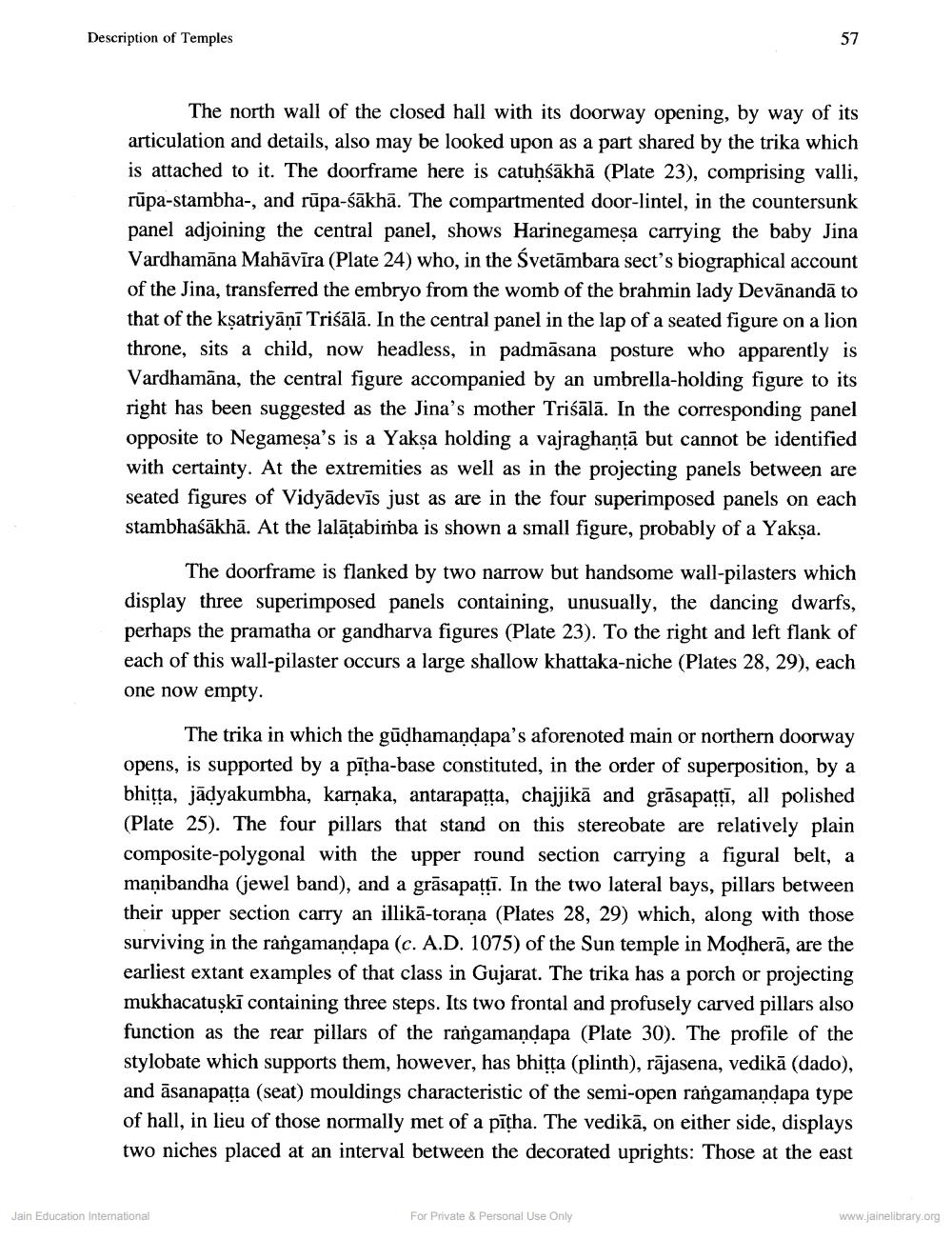________________
Description of Temples
The north wall of the closed hall with its doorway opening, by way of its articulation and details, also may be looked upon as a part shared by the trika which is attached to it. The doorframe here is catuhśākhā (Plate 23), comprising valli, rūpa-stambha-, and rūpa-śākhā. The compartmented door-lintel, in the countersunk panel adjoining the central panel, shows Harinegamesa carrying the baby Jina Vardhamāna Mahāvīra (Plate 24) who, in the Svetāmbara sect's biographical account of the Jina, transferred the embryo from the womb of the brahmin lady Devānandā to that of the ksatriyāṇī Triśālā. In the central panel in the lap of a seated figure on a lion throne, sits a child, now headless, in padmāsana posture who apparently is Vardhamāna, the central figure accompanied by an umbrella-holding figure to its right has been suggested as the Jina's mother Triśālā. In the corresponding panel opposite to Negameşa's is a Yaksa holding a vajraghantā but cannot be identified with certainty. At the extremities as well as in the projecting panels between are seated figures of Vidyādevīs just as are in the four superimposed panels on each stambhaśākhā. At the lalāțabimba is shown a small figure, probably of a Yakşa.
The doorframe is flanked by two narrow but handsome wall-pilasters which display three superimposed panels containing, unusually, the dancing dwarfs, perhaps the pramatha or gandharva figures (Plate 23). To the right and left flank of each of this wall-pilaster occurs a large shallow khattaka-niche (Plates 28, 29), each one now empty.
The trika in which the gūdhamandapa's aforenoted main or northern doorway opens, is supported by a pītha-base constituted, in the order of superposition, by a bhitta, jādyakumbha, karņaka, antarapatta, chajjikā and grāsapattī, all polished (Plate 25). The four pillars that stand on this stereobate are relatively plain composite-polygonal with the upper round section carrying a figural belt, a maņibandha (jewel band), and a grāsapattī. In the two lateral bays, pillars between their upper section carry an illikā-torana (Plates 28, 29) which, along with those surviving in the rangamandapa (c. A.D. 1075) of the Sun temple in Modherā, are the earliest extant examples of that class in Gujarat. The trika has a porch or projecting mukhacatuṣkī containing three steps. Its two frontal and profusely carved pillars also function as the rear pillars of the rangamandapa (Plate 30). The profile of the stylobate which supports them, however, has bhitta (plinth), rājasena, vedikā (dado), and āsanapatta (seat) mouldings characteristic of the semi-open rangamandapa type of hall, in lieu of those normally met of a pītha. The vedikā, on either side, displays two niches placed at an interval between the decorated uprights: Those at the east
Jain Education International
For Private & Personal Use Only
www.jainelibrary.org




